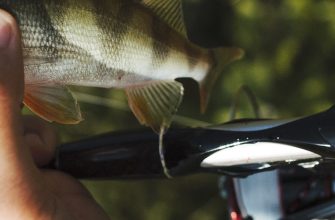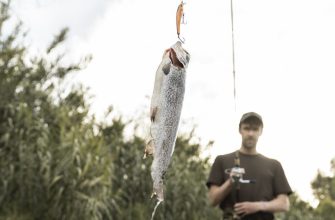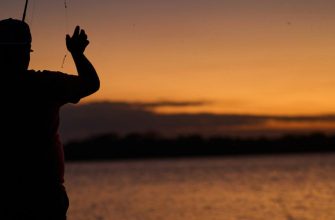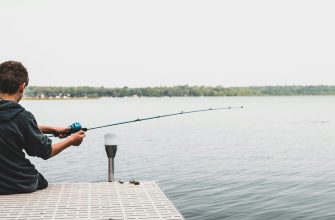- Understanding Trout Fish
- Characteristics and Behavior of Trout Fish
- Different Types of Trout Found in the USA
- Rainbow Trout
- Brown Trout
- Brook Trout
- Cutthroat Trout
- Best Trout Fishing Locations in America
- Western Spots
- Madison River (Montana)
- Colorado River (Colorado)
- Eastern Streams
- Penn’s Creek (Pennsylvania)
- Batten Kill (New York / Vermont)
- High-Mountain Lakes
- Lake Serene (Washington)
- Lake of the Clouds (Michigan)
- Other Popular Trout Destinations in the US
- Au Sable River (Michigan)
- Beaver Kill (New York)
- Bois Brule River (Wisconsin)
- Cataloochee Creek (Cataloochee Valley, North Carolina)
- Chattooga River (Cashiers, North Carolina / Clayton, Georgia / Walhalla, South Carolina)
- Clearwater River (Idaho)
- Davidson River (North Carolina)
- Deschutes River (Oregon)
- Fryingpan River (Colorado)
- Gallatin River (Montana)
- Kern River (California)
- Mossy Creek (Bridgewater, Virginia)
- Nantahala River (North Carolina)
- Nesowadnehunk Stream (Maine)
- North Platte River (Wyoming)
- North Umpqua River (Oregon)
- Pyramid Lakes (Nevada)
- Seneca Creek (Pendleton County, West Virginia)
- South Fork Flathead River (Montana)
- South Platte River (Colorado)
- South Holston River (Tennessee)
- Toccoa River (Blue Ridge, Georgia)
- Upper Connecticut River (New Hampshire/Vermont)
- White River (Arkansas/Missouri)
- Yellowstone River (Montana)
- Essential Gear and Techniques for Trout Fishing
- Fly Fishing for Trout
- Selecting the Right Fly Rods, Reels, Lines, and Flies
- Bait and Lure Fishing
- Best Bait and Lure Options
- Catch and Release Practices for Trout
- Emphasizing Responsible Fishing and Conservation
- Guidelines for Proper Catch and Release Techniques
- Trout Fishing Regulations and Licensing
- Understanding State Regulations
- New York
- California
- Ohio
- Importance of Following Regulations
- FAQs
- Q: What makes Roscoe a popular destination for trout fishing?
- Q: What are some popular trout rivers in Missoula for fishing?
- Q: Where can I find the best trout streams in Mountain Home?
- Q: What are the key attractions for trout fishing in Arkansas?
- Q: What is the significance of Miss Missouri for trout fishing?
- Q: Why is the Manistee River a preferred choice for trout catching?
- Q: What are some popular terms associated with trout fishing in America?
- Q: What are the recommended techniques for catching trout in wilderness streams?
- Q: What are some famous destinations for trout catching in the U.S. with year-round fishing opportunities?
- Q: What are some key organizations supporting trout catching in the U.S.?
Are you a fishing enthusiast looking for the ultimate trout fishing experience in the United States? Look no further! In this article, we will explore some of the most legendary trout streams and rivers that are a must-visit for any fisherman in 2024.
Trout fishing in the USA holds a special allure for outdoor enthusiasts. The feeling of casting a line into a roaring stream with crystal clear water, while rainbow and brown trout swim gracefully beneath the surface, is something every fisherman dreams of. The diversity of trout fisheries across the country ensures that there is something for everyone, whether you prefer the rugged wildlife of Montana or the serene beauty of Colorado’s waterbodies.
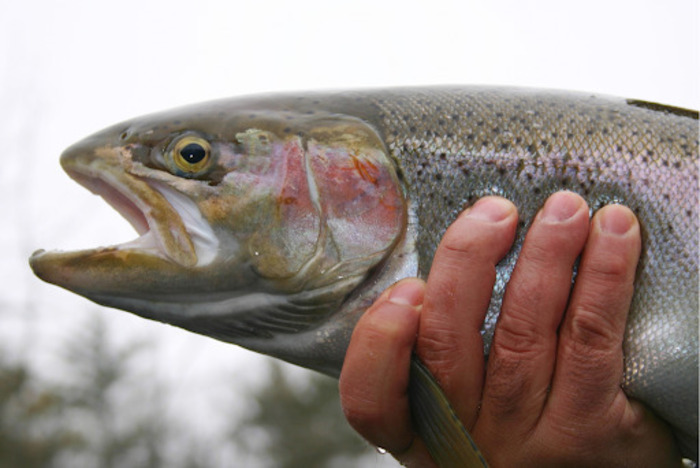
As you plan your trout catching adventure, several destinations should be on your radar. The McCloud River in California, known for its abundant brown population, offers stunning scenery and challenging angling opportunities. If you find yourself in New York, the Willowemoc and Beaverkill rivers both flow through picturesque landscapes, providing ample opportunities to reel in trophy-sized trout. And let’s not forget about the Blackfoot River in Montana, famous for its cutthroat trout population and its connection to the novel “A River Runs Through It.”
When it comes to trout catching in the lower 48 states, Yellowstone National Park stands out as a fisherman’s paradise. Its pristine water bodies, such as Madison and Gibbon, offer unparalleled fishing experiences and breathtaking natural beauty. The park’s rich biodiversity, including native Yellowstone cutthroat trout, makes it a must-visit spot for any trout catching enthusiast.
As you embark on your trout catching journey in 2024, keep in mind the importance of preserving these delicate ecosystems. Responsible angling practices, such as catch-and-release, ensure that future generations can enjoy the same incredible fishing opportunities that we have today.
So, gear up, pack your rods, and get ready to explore the best trout water bodies America has to offer in 2024. Whether you’re a seasoned fisherman or a novice, the thrill of hooking into a prized trout awaits you. Get ready for an unforgettable adventure!
Understanding Trout Fish

Characteristics and Behavior of Trout Fish
Trout fish are known for their unique characteristics and behavior that make them a popular target for fishermen in the United States. These fish are typically found in freshwater water bodies, and they thrive in cold, clean water with high oxygen levels.
Trout have a streamlined body shape, which allows them to swim swiftly through the water. They are known for their vibrant colors, with species like rainbow trout displaying a beautiful array of hues. In terms of size, trout can vary greatly depending on the species and habitat. While some species can reach impressive sizes exceeding 20 inches, others are much smaller, making them a challenging catch for fishermen.
One notable characteristic of trout is their preference for fast-flowing water. They are often found in areas where there is a good supply of oxygen, such as riffles and runs. Trout are also known for their ability to camouflage themselves, using their coloration to blend in with their surroundings and avoid detection by predators.
When it comes to behavior, trout are typically opportunistic feeders. They are known to be voracious predators, feeding on a variety of aquatic insects, crustaceans, and small fish. Trout are most active during the early morning and late evening when they are more likely to be feeding near the water’s surface.
Different Types of Trout Found in the USA
The United States is home to a diverse range of trout species, each with its own unique characteristics and habitat preferences. Here are some of the most common types of trout found in the country:
Rainbow Trout
These trout species are one of the most popular game fish in the United States. They are known for their vibrant colors, including a pinkish stripe that runs along their sides. Rainbows are native to the Pacific Northwest but have been introduced to various bodies of water throughout the country. They are prized for their fighting spirit and acrobatic leaps when hooked.
Brown Trout
These trout are known for their elusive nature and challenging behavior, making them a favorite among experienced fishermen. These trout have a distinctive mottled brown and gold coloration that helps them blend in with their surroundings. Browns are native to Europe but have been successfully introduced to many water bodies in the United States.
Brook Trout
Brook trout, also known as speckled trout, are native to the eastern part of the United States. They are known for their beautiful coloration, with a mix of olive-green, orange, and white spots on their back and fins. This species prefers cold, clean water and is often found in small mountain streams and remote waterbodies.
Cutthroat Trout
Cutthroat trout are named for the distinctive red slashes or “cut marks” on the underside of their lower jaw. They are native to the western part of the United States and can be found in both freshwater and saltwater environments. Cutthroat trout are valued for their beauty and the challenge they pose to fishermen.
Best Trout Fishing Locations in America
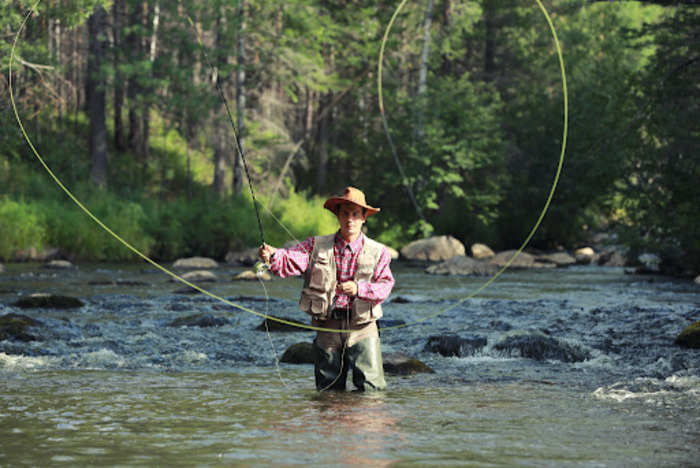
Western Spots
Trout catching enthusiasts in the United States are fortunate to have a plethora of exceptional fishing locations. When it comes to Western water bodies, there are several renowned spots that offer unforgettable trout catching experiences.
Madison River (Montana)
One legendary trout stream in the Western region is the Madison River in Montana. Known for its breathtaking scenery and abundant trout populations, this water body attracts fishermen from all over the country. With its diverse range of insect hatches and accessible fishing spots, it provides an ideal setting for both seasoned fishermen and beginners.
Colorado River (Colorado)
Another Western gem is the Colorado River in Colorado. This iconic water body is home to various trout species, including rainbows, browns and cutthroats. Fishermen can enjoy casting their lines amidst stunning mountain landscapes, surrounded by the tranquility of nature. This fishing spot offers a mix of challenging stretches and more relaxed sections, catering to different angling preferences.
Eastern Streams
On the other side of the country, the Eastern streams boast their own collection of top-notch trout catching locations. These streams hold a special allure for fishermen seeking a different angling experience.
Penn’s Creek (Pennsylvania)
One renowned Eastern stream is Penn’s Creek in Pennsylvania. This picturesque waterway is famous for its excellent hatches, particularly the Green Drake hatch, which draws fishermen eager to test their skills during this exciting time. Penn’s Creek flows through beautiful valleys and offers diverse fly fishing opportunities for trout enthusiasts.
Batten Kill (New York / Vermont)
Another notable Eastern stream is the Batten Kill in New York and Vermont. This classic trout stream is known for its challenging fishing conditions, making it a favorite among experienced fishermen. The Batten Kill’s clear waters and scenic surroundings create an atmosphere of tranquility that enhances the angling experience.
High-Mountain Lakes
For those seeking a more secluded and serene fishing experience, this angling spot presents an enticing option. These pristine alpine waterbodies offer breathtaking views and the opportunity to catch trout in untouched wildlife.
Lake Serene (Washington)
One such high-mountain waterbody is the Lake Serene in Washington. Nestled within the majestic Cascade Mountains, this shimmering waterbody is home to various trout species, including the prized cutthroat trout. Fishermen can enjoy the tranquility of the surroundings while casting their lines and immersing themselves in the beauty of nature.
Lake of the Clouds (Michigan)
Another high-mountain jewel is the Lake of the Clouds in Michigan. Situated in the Porcupine Mountains Wilderness State Park, this remote fishing spot offers fishermen a chance to connect with nature while pursuing elusive brook trout. The pristine wildlife surrounding the waterbody creates a sense of adventure and serenity that enhances the fishing experience.
Other Popular Trout Destinations in the US
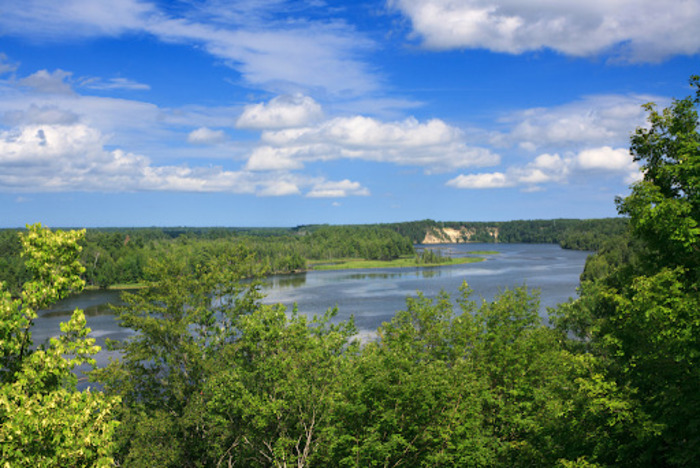
Au Sable River (Michigan)
Located in Michigan, the Au Sable River is renowned for its exceptional trout catching opportunities. This waterbody stretches for miles, offering a diverse range of catching spots.
Fishermen can expect to catch various trout species, including browns, rainbows and brooks. The crystal-clear waters and picturesque surroundings make the Au Sable waterbody a favorite among fishermen seeking a tranquil fishing experience.
Beaver Kill (New York)
In the heart of New York, the Beaver Kill is a legendary trout stream that has attracted fishermen for decades. This angling spot is particularly famous for its brown trout population, with many fishermen chasing after these prized fish.
The Beaver Kill’s rugged beauty and challenging fishing conditions add to the allure of this iconic trout angling spot.
Bois Brule River (Wisconsin)
Wisconsin’s Bois Brule River is a hidden gem for trout catching enthusiasts. This picturesque waterbody offers excellent opportunities to catch steelhead and browns.
Whether you prefer fly fishing or spin casting, the Bois Brule provides a variety of fishing techniques to suit all preferences. Fishermen can enjoy the peaceful surroundings and the thrill of reeling in trout in this scenic location.
Read more: The Best Fishing Lines for Trout in 2024 | Fly-Fishing, Braid & More
Cataloochee Creek (Cataloochee Valley, North Carolina)
Nestled in the Cataloochee Valley of North Carolina, Cataloochee Creek is a haven for trout catching enthusiasts. This waterbody is home to native brook trout, which adds to its allure.
Fishermen can enjoy the serenity of the surrounding Great Smoky Mountains National Park while testing their skills in catching these elusive trout. Cataloochee Creek offers a unique fishing experience in a pristine natural setting.
Chattooga River (Cashiers, North Carolina / Clayton, Georgia / Walhalla, South Carolina)
Spanning across three states, the Chattooga River is a legendary trout angling spot known for its beauty and challenging fishing conditions. This wild and scenic waterbody provides ample opportunities to catch browns, rainbows and brooks.
Fishermen can enjoy the thrill of fishing in diverse sections of the waterbody, each offering its own unique angling experience.
Clearwater River (Idaho)
Idaho’s Clearwater River is a renowned trout fishery that attracts fishermen from far and wide. This angling spot is famous for its steelhead runs, offering exciting opportunities for fly fishing enthusiasts.
Its crystal-clear waters and breathtaking surroundings make this waterbody an idyllic location for trout catching.
Davidson River (North Carolina)
Located in the Pisgah National Forest, the Davidson River is known for its crystal-clear waters and abundance of trout. This angling spot is particularly famous for its population of browns and rainbows, making it a haven for fly fishing enthusiasts.
Fishermen can enjoy the scenic beauty of the surrounding forest while casting their lines in the hopes of landing a trophy-sized trout.
Deschutes River (Oregon)
The Deschutes River in Oregon is a world-renowned trout catching spot. It is home to a variety of trout species, including rainbow, brown, and native redband trout.
Fishermen flock to this fishing spot for its productive waters and stunning scenery. Whether you prefer fly fishing or spin fishing, the Deschutes waterbody offers plenty of opportunities to test your angling skills and catch some beautiful trout.
Fryingpan River (Colorado)
Nestled in the heart of the Rocky Mountains, the Fryingpan River is a paradise for trout fishermen. This freestone waterbody is famous for its exceptional trout population, especially its trophy-sized rainbow and brown trout.
This spot flows through a picturesque canyon, offering fishermen breathtaking views as they try their luck in its productive waters. Whether you’re a seasoned angler or a beginner, the Fryingpan waterbody is sure to provide a memorable fishing experience.
Gallatin River (Montana)
Montana is known for its outstanding trout catching, and the Gallatin River is no exception. Flowing through the scenic Gallatin Canyon, this angling spot is teeming with rainbow, brown, and cutthroat trout.
It offers a diverse range of fishing opportunities, from wading in its upper stretches to floating in a drift boat further downstream. With its stunning mountain backdrop and excellent trout population, the Gallatin waterbody is a must-visit angling spot for any trout enthusiast.
Kern River (California)
The Kern River in California is a hidden gem for trout catching. This waterbody is home to healthy populations of rainbow and brown trout, which thrive in its cool and clear waters. Fishermen can enjoy fishing in the upper and lower sections of this angling spot, each offering its own unique fishing experience.
Whether you prefer casting from the riverbanks or floating down the waterbody in a kayak, this angling spot promises exciting trout catching adventures.
Mossy Creek (Bridgewater, Virginia)
Located in Bridgewater, Virginia, Mossy Creek is a small but mighty trout stream that has gained a reputation among fishermen. This spring-fed angling spot is known for its challenging fishing conditions and its large population of brown and rainbow trout.
It offers a mix of open and shaded areas, providing fishermen with different fishing opportunities throughout its course. With its scenic beauty and excellent trout catching, Mossy Creek is a favorite among local fishermen.
Nantahala River (North Carolina)
Nestled in the stunning Appalachian Mountains of North Carolina, the Nantahala River is a trout fisherman’s dream. Flowing through the picturesque Nantahala National Forest, this angling spot offers abundant opportunities to catch various trout species.
Whether you’re a beginner or an experienced fisherman, the Nantahala waterbody provides an unforgettable fishing experience.
Nesowadnehunk Stream (Maine)
Located in the beautiful Baxter State Park, Nesowadnehunk Stream is a hidden gem for trout caught in Maine. Known for its pristine wildlife and breathtaking scenery, this stream offers a tranquil escape for fishermen seeking solitude.
With its clear waters and healthy trout population, Nesowadnehunk Stream promises an exciting and rewarding fishing adventure.
North Platte River (Wyoming)
The North Platte River in Wyoming is renowned for its world-class trout catching. With its diverse sections and abundance of trout, this fishing spot attracts fishermen from near and far.
Whether you prefer wading or floating, the North Platte waterbody offers a range of fishing opportunities for all skill levels. The breathtaking landscapes and the thrill of hooking a trophy trout make this angling spot a must-visit for any fisherman.
North Umpqua River (Oregon)
Nestled in the heart of the Oregon Cascades, the North Umpqua River is a legendary trout fishery. Known for its crystal-clear waters and challenging fishing conditions, this angling spot is a paradise for fly fishermen.
The North Umpqua River is home to native steelhead and salmon, as well as feisty rainbow and cutthroat trout. Fishing on this scenic waterbody is an experience that will captivate any angler.
Pyramid Lakes (Nevada)
Situated in the starkly beautiful Nevada desert, this angling spot is a unique trout catching spot. This ancient waterbody system is home to Lahontan cutthroat trout, a species that has thrived in these waters for thousands of years.
With its stunning pyramid-shaped rock formations and the chance to catch trophy-sized trout, Pyramid Lakes offers an unforgettable fishing adventure.
Seneca Creek (Pendleton County, West Virginia)
Tucked away in the picturesque Pendleton County, West Virginia, Seneca Creek is a hidden gem for trout enthusiasts. With its pristine waters and breathtaking scenery, this waterbody provides a serene and peaceful fishing experience.
The cool mountain streams are home to native brook trout, making it an ideal angling spot for those seeking solitude and natural beauty.
South Fork Flathead River (Montana)
The South Fork Flathead River in Montana is renowned for its exceptional trout catching opportunities. Nestled within the boundaries of the stunning Bob Marshall Wilderness, this waterbody offers a pristine and remote fishing experience.
Fishermen can expect to find healthy populations of wild trout, including Westslope Cutthroat, Bull Trout, and Rainbow Trout.
Its clear waters and scenic surroundings make it a favorite angling spot for both fly-fishing enthusiasts and nature lovers.
South Platte River (Colorado)
The South Platte River in Colorado is a mecca for trout catching enthusiasts. With its diverse stretches, ranging from small mountain streams to wide-open tailwaters, this fishing spot offers something for every angler.
The section below Cheesman Reservoir is particularly famous for its exceptional trout population, including Brown Trout and Rainbow Trout.
Whether you prefer wading or floating, the South Platte waterbody provides ample opportunities to test your angling skills and reel in some impressive catches.
South Holston River (Tennessee)
Nestled in the picturesque Appalachian Mountains, the South Holston River in Tennessee is a prime destination for trout catching. Known for its abundance of Brown Trout and Rainbow Trout, this catching spot offers both challenging and rewarding angling experiences.
The clear and cold waters of the South Holston River provide the perfect habitat for these prized trout species.
Fishermen can enjoy a mix of dry fly, nymph, and streamer fishing techniques while taking in the breathtaking scenery of the surrounding mountains.
Toccoa River (Blue Ridge, Georgia)
Located in the charming town of Blue Ridge, Georgia, the Toccoa River is a hidden gem for trout catching enthusiasts. This scenic waterbody offers a variety of fishing opportunities, from trophy trout sections to family-friendly areas.
Brown Trout and Rainbow Trout are plentiful in the Toccoa waterbody, providing fishermen with exciting challenges and rewarding catches. Whether you prefer to fish from the riverbanks or embark on a float trip, the Toccoa area promises a memorable and fruitful fishing experience.
Upper Connecticut River (New Hampshire/Vermont)
The Upper Connecticut River, flowing through the picturesque states of New Hampshire and Vermont, offers some of the finest trout catching opportunities in the United States. With its crystal-clear waters and abundant trout population, this catching spot is a haven for fishermen seeking a thrilling fishing experience.
This waterbody is known for its diverse trout species, including browns, rainbows and brooks. Fishermen can test their skills by fly fishing or spin casting along the waterbody’s banks, where trout eagerly await their next meal.
Its swift currents and deep pools provide an ideal habitat for these prized fish.
White River (Arkansas/Missouri)
Nestled in the heart of Arkansas and Missouri, the White River is a legendary trout catching spot that attracts fishermen from near and far. Renowned for its trophy-sized trout and breathtaking scenery, this angling spot offers an unforgettable fishing experience.
The White River is famous for its brown trout, which thrive in its cold, clear waters. Fishermen can enjoy both wading and driftboat fishing along the waterbody, taking advantage of the numerous riffles, runs, and deep pools that are home to these prized fish.
Whether you prefer dry fly fishing or nymphing, this waterbody provides ample opportunities to test your angling skills.
Yellowstone River (Montana)
The Yellowstone River, flowing through the pristine landscapes of Montana, is a mecca for trout catching enthusiasts. Known for its stunning beauty and exceptional trout populations, this fishing area offers an unparalleled fishing adventure.
Rainbow trout and brown trout are the primary targets for fishermen on the Yellowstone waterbody. With its diverse water types, ranging from fast-paced rapids to peaceful meandering stretches, the waterbody provides a variety of fishing experiences.
From casting dry flies to drifting nymphs, fishermen can employ different techniques to entice these majestic trout.
Essential Gear and Techniques for Trout Fishing

Fly Fishing for Trout
Fly fishing is an artful and effective technique for targeting trout. It requires skill and precision to mimic the insects on which trout feed. To excel at fly fishing for trout, you need to select the right gear.
Selecting the Right Fly Rods, Reels, Lines, and Flies
When choosing a fly rod for trout catching, consider the weight and length that best suits your fishing style and the size of the water you’ll be fishing in. A lighter weight rod, such as a 3 or 4 weight, is ideal for small rivers and streams, while a heavier weight rod, like a 5 or 6 weight, is better for larger rivers and lakes.
Pair your fly rod with a reel that has a smooth drag system to handle the powerful runs of trout. Ensure that the reel balances well with your rod.
Selecting the right fly line is crucial for effective fly fishing. Weight-forward lines are versatile and suitable for most trout catching situations. Choose a line with a weight and taper that matches your rod.
When it comes to flies, there is a wide variety to choose from. Dry flies, nymphs, and streamers are commonly used for trout catching. Research the hatch patterns and insect life in the waters you plan to fish, and select flies accordingly.
Bait and Lure Fishing
While fly fishing is popular, bait and lure fishing are alternative methods that also yield great results when targeting trout.
Best Bait and Lure Options
When using bait for trout catching, live bait such as worms, minnows, or salmon eggs can be effective. Use small hooks and lightweight tackle to present the bait naturally. Keep in mind that regulations may restrict the use of live bait in certain waters, so check the local fishing regulations before using live bait.
Lure fishing for trout offers an exciting and dynamic approach. Spinners, spoons, and crankbaits are popular choices. Opt for smaller sizes and natural colors to imitate the trout’s natural prey. Experiment with different retrieval speeds and techniques to find what works best.
Remember to check the fishing regulations for the specific trout species and fishing conditions in your area. Respect catch limits and practice catch-and-release to ensure the sustainability of trout populations.
Catch and Release Practices for Trout
Emphasizing Responsible Fishing and Conservation
Responsible fishing is crucial for the long-term health of trout populations and their habitats. By practicing catch and release, fishermen can help maintain sustainable fish populations and contribute to the conservation of these magnificent species.
When it comes to trout catching, it is important to remember that these fish play a vital role in the ecosystem. They serve as indicators of water quality and are a crucial part of the food chain. By practicing responsible fishing, we can help preserve their habitats and ensure their survival for future generations of fishermen to enjoy.
Guidelines for Proper Catch and Release Techniques
To ensure the best chance of survival for released trout, it is essential to follow proper catch and release techniques. Here are some guidelines to keep in mind:
- Use Barbless Hooks: Barbless hooks are easier to remove and cause less injury to the fish. They increase the chances of a successful release and minimize harm to the trout.
- Minimize Air Exposure: When landing a trout, try to keep it in the water as much as possible. Excessive air exposure can harm the fish and decrease its chances of survival. If you need to handle the trout, wet your hands first to avoid removing its protective slime layer.
- Handle with Care: When handling a trout, do so gently and avoid squeezing or putting excessive pressure on its body. Use a landing net or wet your hands before touching the fish to minimize damage to its skin and scales.
- Quickly Remove the Hook: Use a pair of forceps or needle-nose pliers to remove the hook swiftly and efficiently. If the hook is deeply embedded, consider cutting the line close to the hook instead of risking further injury to the fish.
- Revive the Trout: Before releasing the trout, hold it gently in an upright position underwater. Allow the fish to regain its strength and swim away on its own. Avoid releasing the trout in areas with strong currents or predators.
By following these guidelines, fishermen can enjoy the sport of trout catching while also contributing to the conservation of these magnificent fish.
Trout Fishing Regulations and Licensing
Understanding State Regulations
Each state in the US has its own set of fishing regulations that fishermen must follow. These regulations include rules about catch limits, size restrictions, and specific fishing seasons. It is crucial to familiarize yourself with the regulations of the state where you plan to fish to ensure you are in compliance and avoid any penalties.
To give you an idea of the diversity of regulations across different states, let’s take a closer look at some popular trout catching spots:
New York
In New York, trout fishing regulations vary depending on the region and the type of water you are fishing in. For example, in most rivers and streams, the daily creel limit for trout is five fish, with a minimum size limit of nine inches. However, there are exceptions to these rules in certain areas, so it’s important to check the specific regulations for the water you plan to fish.
Read more: Best Trout Lures of 2023 – Top-Rated Lures, Crankbaits & More For Fishing Trout
California
California is home to some of the best trout catching waters in the country. The state offers a wide variety of regulations to protect its trout populations. For instance, in many of California’s rivers and streams, there is a catch-and-release policy for certain species of trout. Additionally, some waters have special restrictions, such as artificial lures or barbless hooks only. It’s crucial to review the regulations specific to the water you intend to fish to ensure compliance.
Ohio
In Ohio, trout catching is primarily regulated in Lake Erie tributaries and a few inland waterbodies. The state has implemented a daily limit of two trout per angler, with a minimum size limit of 12 inches. Fishermen are also required to have a valid Ohio fishing license and a Lake Erie permit when fishing in Lake Erie tributaries. These regulations are in place to protect trout populations and ensure sustainable fishing opportunities for future generations.
Importance of Following Regulations
Following trout fishing regulations is not only a legal requirement but also crucial for the conservation of fish populations and the overall health of the ecosystem. By adhering to catch limits and size restrictions, fishermen can help maintain a balanced trout population and preserve the natural beauty of fishing areas.
Additionally, fishing regulations play a vital role in ensuring fair and equitable access to fishing opportunities for all fishermen. By respecting these regulations, you contribute to the sustainability of trout fisheries, allowing everyone to enjoy the thrill of trout catching now and in the future.
FAQs
Q: What makes Roscoe a popular destination for trout fishing?
A: Roscoe is known as the trout town and is home to the Willowemoc and Beaverkill rivers, making it a top destination for trout catching enthusiasts.
Q: What are some popular trout rivers in Missoula for fishing?
A: Missoula offers excellent trout catching opportunities in its waterbodies like the Clark Fork and Bitterroot River, attracting fishermen from all over.
Q: Where can I find the best trout streams in Mountain Home?
A: Mountain Home is famous for its clear mountain streams such as the Southwestern and Sierra Nevada rivers, offering some of the best trout catching experiences.
Q: What are the key attractions for trout fishing in Arkansas?
A: Arkansas boasts world-famous trout waterbodies like the White River and Little Red River, making it a must-visit spot for trout catching in America.
Q: What is the significance of Miss Missouri for trout fishing?
A: Miss Missouri is known for its diverse trout waters, offering opportunities for backcountry fishing and catching monster trout in its renowned waterbodies.
Q: Why is the Manistee River a preferred choice for trout catching?
A: The Manistee River in the U.S. state’s lower region is a gold medal river and is known for its big brown trout, drawing fishermen seeking high-quality trout catching experiences.
Q: What are some popular terms associated with trout fishing in America?
A: Trout catching in America is often linked with terms like dam, firehole, tailwater, and year-round fishing, reflecting the diverse and abundant fishing opportunities available.
Q: What are the recommended techniques for catching trout in wilderness streams?
A: Fishing for trout in wilderness streams often requires using spring creek patterns and exploring tailwater areas, which are popular techniques for successful trout catching in remote environments.
Q: What are some famous destinations for trout catching in the U.S. with year-round fishing opportunities?
A: Redding, California, and the Lower Sacramento River in the U.S. provide year-round trout catching opportunities, catering to fishermen looking to fish for trout regardless of the season.
Q: What are some key organizations supporting trout catching in the U.S.?
A: Trout Unlimited is a prominent organization committed to supporting trout catching in the U.S., advocating for conservation efforts and promoting the enjoyment of trout catching for enthusiasts.

